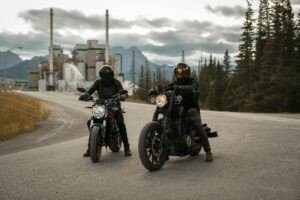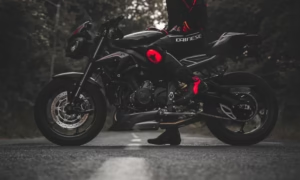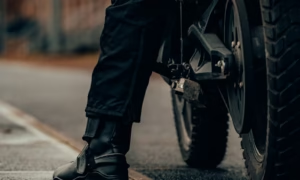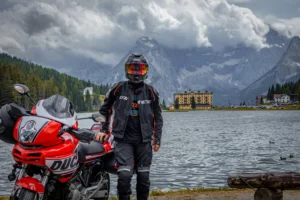Best Motorcycle Riding Gear 2025 Welcome, fellow riders, to the most comprehensive guide on motorcycle gear you’ll find. In the...
Read MoreMotorcycle Riding Boots Page
how to use this page ? first use the smart gear finder tool (at this link) to assess your needs. second see which type of gear listed below matches your needs. third check the buying guide and blogs to confirm your choices. fifth buy from retailer listed below
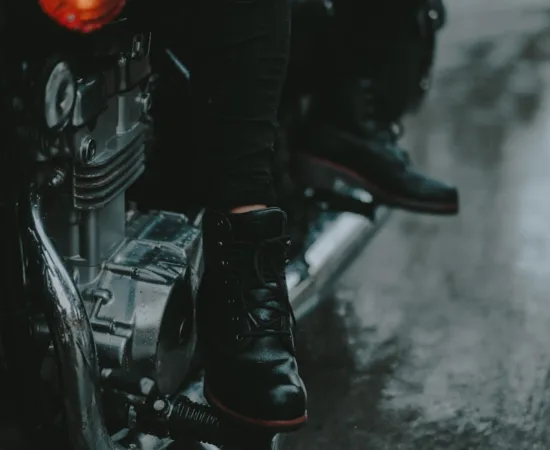
Urban / Commuter Boots
Use: City riding, short commutes, café stops. Features: Sneaker-like styling, reinforced ankle/toe areas. Pros: Lightweight, walkable, versatile. Cons: Limited crash protection.
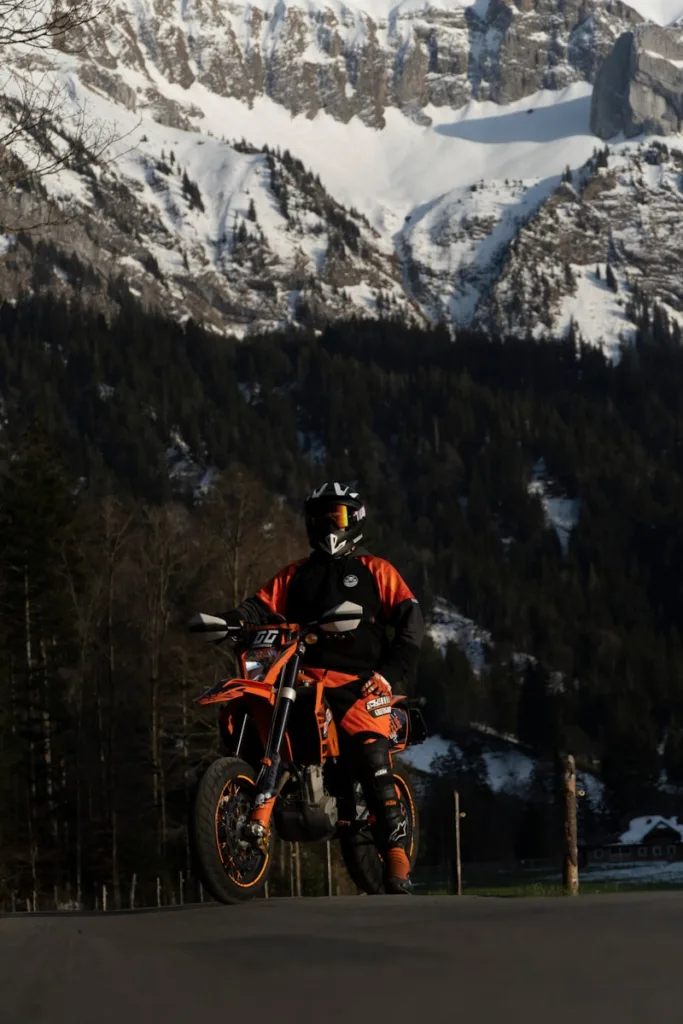
Enduro Boots
Use: Off-road trails, enduro races, mixed terrain. Features: High shin guards, reinforced soles, rigid shell for impact protection. Pros: Superior off-road safety, built for rough conditions. Cons: Heavy, stiff, not suited for road-only rides.
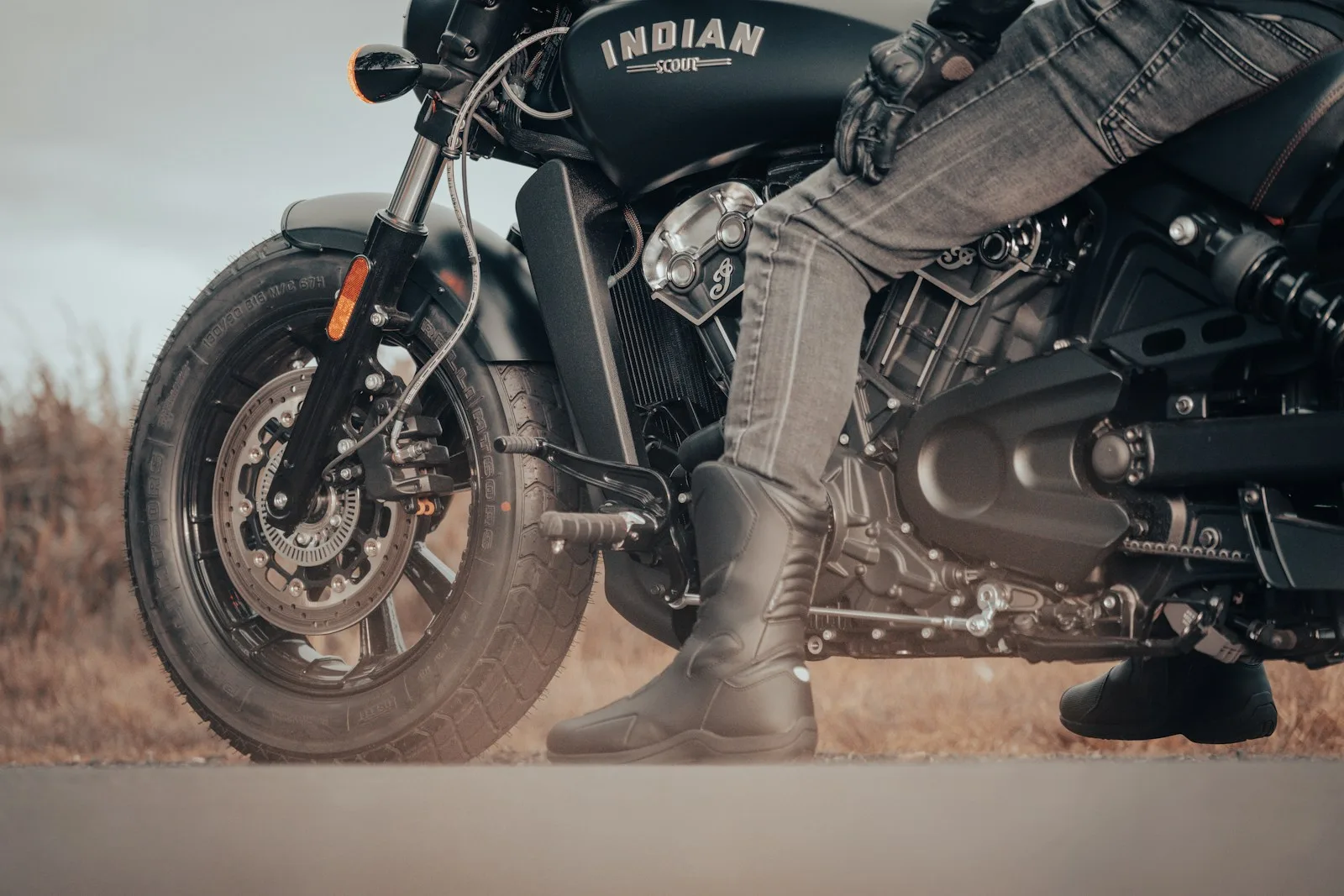
Leather Boots
Use: Urban rides, touring, casual road trips. Features: Full-grain leather build, ankle protection, weather resistance, and classic styling. Pros: Durable, stylish, comfortable for daily wear. Cons: Less ventilation, limited off-road protection.
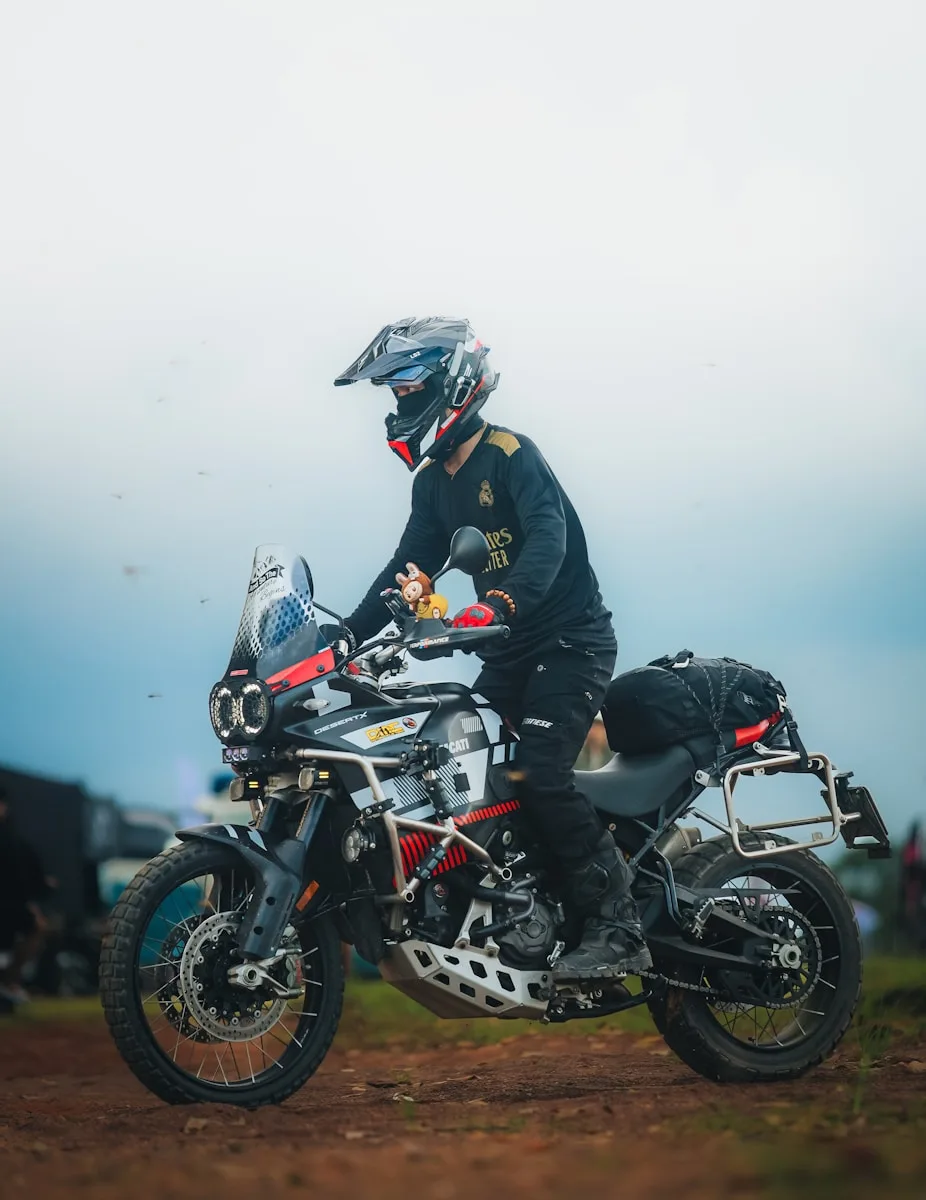
Adv Boots
Use: On/off-road riding, overland expeditions, rugged terrain. Features: Waterproof liners, tall construction, aggressive tread, impact armour. Pros: Crash-ready, durable, built for crossings and rough trails. Cons: Heavy, stiff for casual riding.
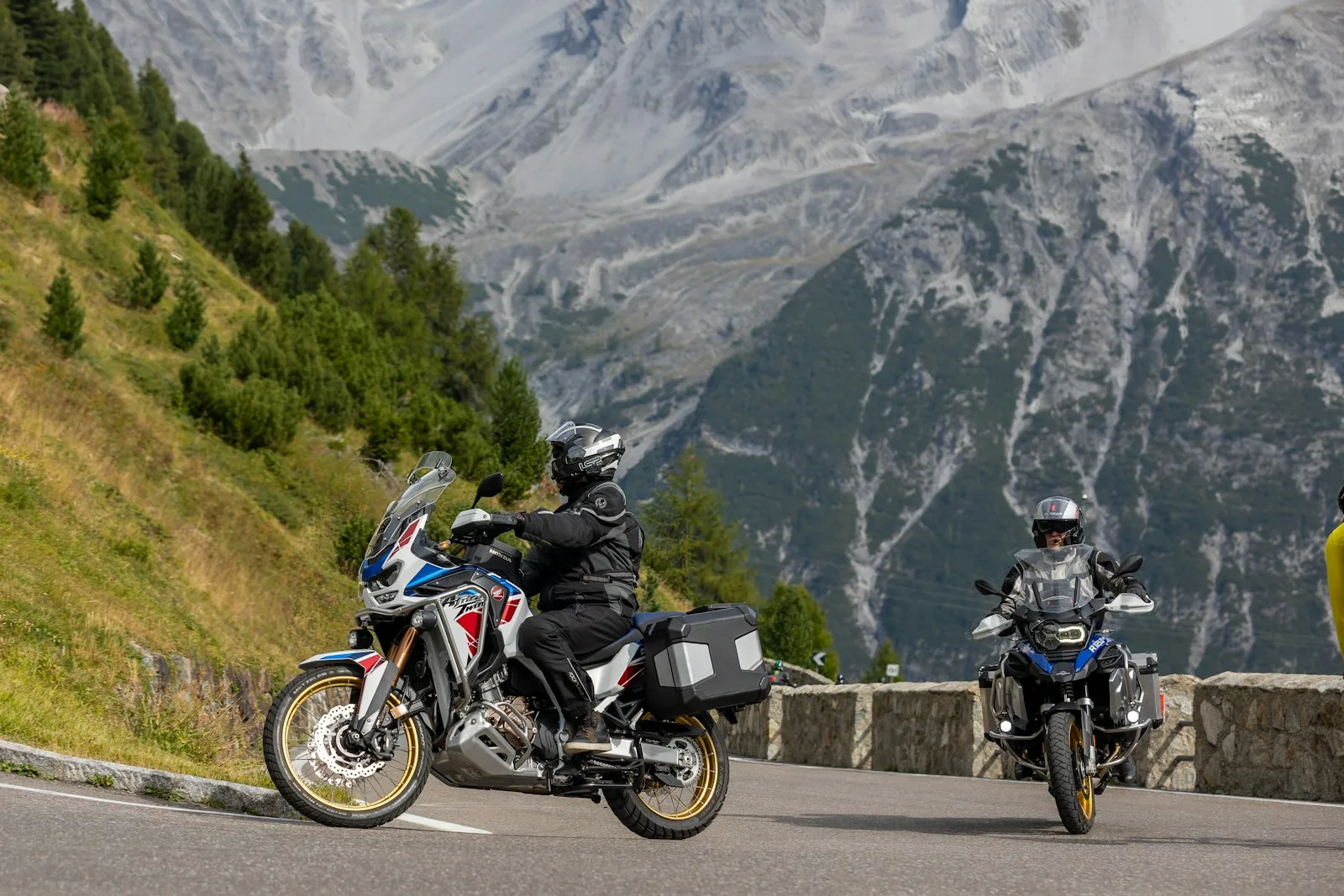
Touring /Waterproof Boots
Use: Off-road trails, enduro competitions, mixed surfaces. Features: High shin guards, reinforced soles, rigid construction. Pros: Maximum off-road protection, built for impacts. Cons: Heavy, not ideal for road-only use.
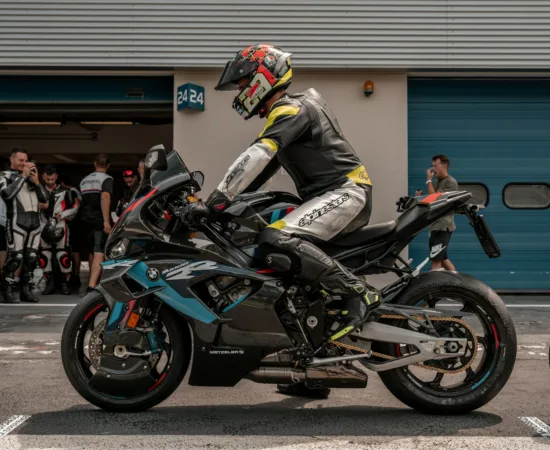
Track / Sports Boots
Use: Track days, sport bikes Features: Reinforced ankle and heel, sliders, premium abrasion resistance. Pros: Maximum protection, aerodynamic fit. Cons: Less comfortable for walking or daily commuting.
goodgearhub affiliate network
You can shop from some of the worlds best retailers below. the goodgearhub affiliate network. today with grace we are lucky to have them in our network. any purchase you make might entitle us to a small commission with no extra cost to you.
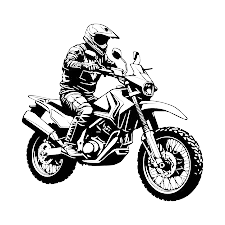
Motorcycle Riding Gear — USA
- RevZilla (USA) Shop RevZilla →
- JP Cycles (USA) Shop JP Cycles →
- MotoSport (USA) Shop MotoSport →
- Suunto (US / Global) Shop Suunto →
Motorcycle Riding Gear — Europe
- Belstaff (UK) Shop Belstaff
- Alpinestars — Shop Italy – Shop UK – Shop France – Shop Spain – Shop Denmark– Shop Rest of EU
- FC-Moto (DE / UK / FR) Shop FC-Moto →
- Motoin Shop Motoin — Austria • Shop Motoin — Denmark • Shop Motoin — Spain
How to Choose the Right Motorcycle Riding Boots
Motorcycle riding boots aren’t just about style — they are your first line of defense when things go sideways, shielding your feet, ankles, and lower legs from impact, abrasion, burns, water, and fatigue. Whether you’re on a 20-minute city commute or a 3,000-kilometer transcontinental ride, the right pair of boots can define your experience.
But most riders don’t know what to look for. Do you really need shin armor? Will waterproofing make them stiff? What’s the difference between race and ADV boots anyway?
Let’s break it all down.
Why You Shouldn’t Ride Without Motorcycle Riding Boots
Plenty of riders make the rookie mistake of using hiking or work boots. Here’s why that’s a bad idea:
No ankle support – Common boots don’t account for lateral twists or roll protection.
No gear-shift reinforcement – You’ll wear through them fast.
No abrasion or crush protection – In a slide or impact, your feet are exposed.
No waterproofing or ventilation – Miserable in monsoons or heatwaves.
Motorcycle riding boots are built for the job — CE-certified materials, reinforced soles, gear-shift panels, shin and heel armor, waterproof liners, quick-release closures — every feature exists because of what the road can throw at you.
Types of Motorcycle Riding Boots
Different rides demand different boots. Here’s how the main types break down:
Touring Boots
Use: Long-distance road riding, highway cruising, weekend getaways
Features: Tall shaft, waterproofing, comfort insoles, shin and ankle protection
Pros: All-weather comfort, balanced protection
Example Riders: Sport-tourers, touring bikes, commuters
Best for: City-to-mountain routes or 300km+ weekend rides
Adventure / ADV Boots
Use: On/off-road, overlanding, transcontinental rides
Features: Maximum protection, tall profiles, waterproof liners, aggressive tread, impact armor
Pros: Built for crashes, creek crossings, and broken terrain
Cons: Stiff and heavy for everyday wear
Racing / Track Boots
Use: High-speed track days, performance riding
Features: Replaceable toe sliders, hard heel cups, shin plates, torsion control systems
Pros: Maximum abrasion resistance and ankle stability
Cons: Not built for walking or all-day wear
Urban / Casual Boots
Use: City riding, short commutes, cafe runs
Features: Sneaker-like styling with riding reinforcements
Pros: Walkable, lightweight, versatile
Cons: Limited high-speed protection
Enduro / MX Boots
Use: Off-road, trail, motocross, enduro rally
Features: Massive shin plates, knee integration, buckles, crush-resistant sole, maximum armor
Pros: Toughest category for the gnarliest terrain
Cons: Overkill for street use
What to Look for in a Good Pair of Motorcycle Riding Boots
CE Certification – Tested for impact, crush, and abrasion.
Ankle Protection – Reduces injury during slides, high-sides, or bike drops.
Reinforced Toe & Heel – Keeps your feet intact in case of collision.
Sole Grip & Rigidity – Prevents footpeg fatigue, offers traction on gravel or oil.
Waterproofing – Dry feet = longer, more comfortable rides.
Ventilation – Critical in tropical or desert heat.
Closure Systems – Buckles, zippers, or BOA for quick secure fit.
Shift Pad – Prevents boot wear at high-use points.
How to Pick the Right Motorcycle Riding Boots for Your Ride
Ask yourself:
Where do you ride most often — city, highways, mountains, or off-road?
What’s the weather like — hot, wet, cold, or all-season?
How long is your average ride — 20 minutes or 2000 km?
Then choose:
Touring boots – for 80% road and all-day comfort.
ADV boots – for dirt detours or international overlanding.
Racing boots – for lean angles and lap times.
Urban boots – if you’re on and off the bike often.
MX boots – only if you’re off-roading seriously.
Care and Maintenance of Motorcycle Riding Boots
After every ride: Wipe clean with a damp cloth.
Weekly: Check for buckle, sole, or stitching damage.
Monthly: Apply waterproofing spray if applicable.
Every season: Clean liners, especially if removable.
Fit, Sizing & Comfort Tips — Read Before You Buy Motorcycle Riding Boots
Getting the right size isn’t just about comfort — it’s about safety, control, and endurance.
Fit First, Then Features
Try before you buy whenever possible.
Wear your normal riding socks.
Ensure snug fit at heel, midfoot, and ankle.
Leave a 1 cm toe gap for impact safety.
How to Measure Right (If Buying Online)
Stand on paper with socks on.
Trace your foot and measure heel to big toe.
Add 1–1.2 cm buffer.
Compare to brand sizing charts.
Socks Matter More Than You Think
Use moisture-wicking, tall riding socks.
Avoid thick cotton socks for sizing accuracy.
Don’t fold socks near the ankle.
Tall vs Mid vs Short Boots
Tall boots – maximum protection, longer break-in.
Mid boots – balanced protection and mobility.
Short boots – walk-friendly but less protective.
Break-In Tips
Wear indoors before riding.
Use leather conditioner for flexibility.
Waterproofing & Weather Fit
Waterproof liners add bulk and insulation.
Ventilated boots are best for hot, dry climates.
Quick Recap — Motorcycle Riding Boots Fit Tips Checklist
Measure foot length properly.
Leave 1–1.2 cm toe gap.
Wear riding socks when testing.
Ensure no heel lift or ankle slop.
Pick shaft height based on ride type.
Break in gradually.
goodgearhub ProTips for Motorcycle Riding Boots
Don’t size up — good boots break in, loose boots break you.
Use dual-sport soles if you ride off-road.
Waterproof boots save rides in bad weather.
Zipper + velcro + buckle = best closure system.
Tall socks prevent chafing.
Race boots are for the track, not daily commuting.
Best Gore-Tex Adventure Motorcycle Boots 2025 – Reviews & Buying Guide
For adventure riders in the UK and EU, having boots with a Gore-Tex lining is pretty much a must. They...
Read MoreBest Motorcycle Riding Gear Protection Explained.
It gets quite confusing with so many terms and diff countries having different standards. This blog explains it all. To...
Read MoreBest Motorcycling Boots 2025
Never before list of All time best boots across 1.Touring 2.Adventure Touring 3.Motocross 4.Sports Bikes 5. Track. Evaluated on 10...
Read MoreBest Guide to Buying Motorcycle Boots Online
Buying boots online is not a challenge anymore. Just use these time proven tips and you will be surprised how...
Read MoreBest Guide to Buy Motorcycle Gear Online 2025
This blog comprehensive, hands-on guide demystifies each evaluation criterion with individual, hands-on tips. Refer to this guide while shopping online...
Read MoreMaster Motorcycle Riding Like a Pro
The SAGMIREE system breaks down to Skills, Attitude, Gear, Motorcycle, Investment, Responsibility, Etiquette, and Endurance. It's an all encompassing guide...
Read More